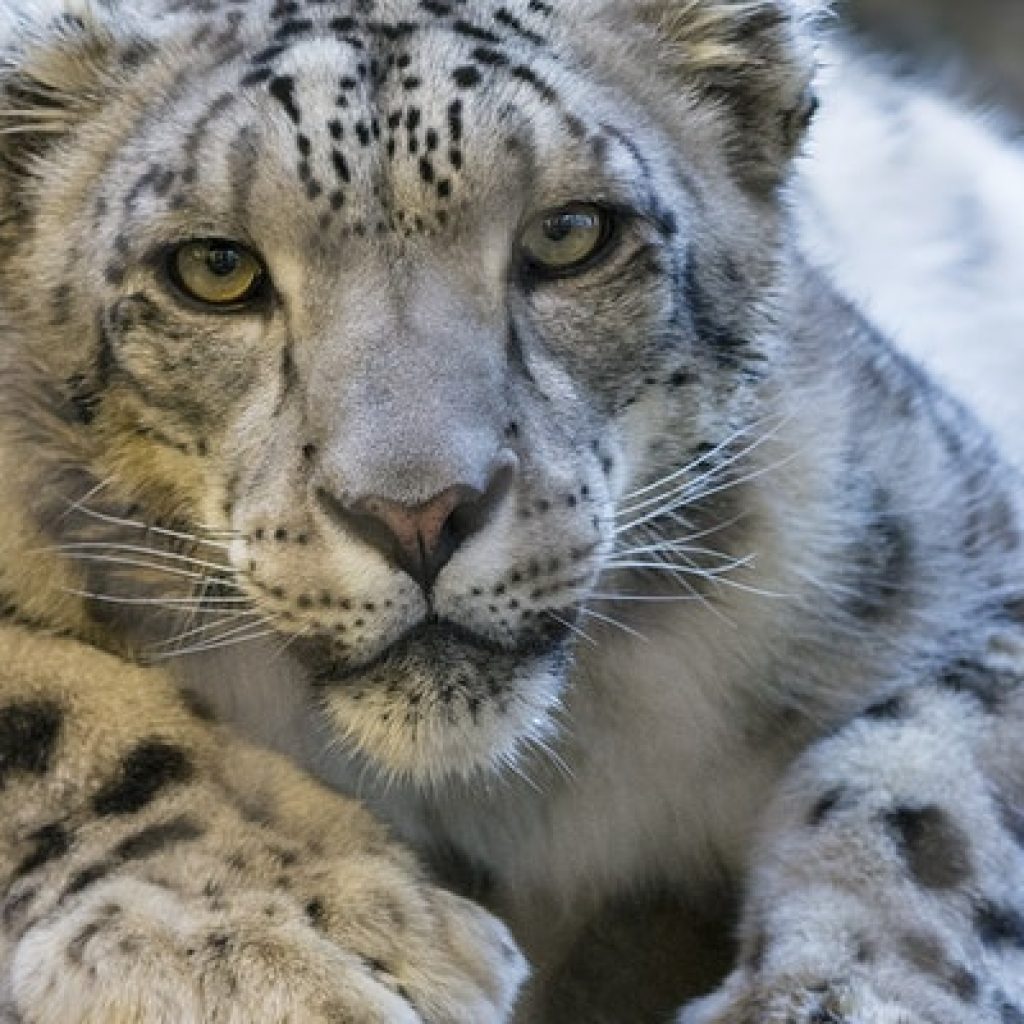Written By – Erika S. Hanson
The snow leopard is one of nature’s most beautiful creatures. As of 2021, the snow leopard is no longer considered an endangered species. However, the population is still at risk due to illegal poaching and the encroachment of society into the cats’ habitat. So, although it has been moved from “endangered” to “vulnerable” on the Endangered Species list, the snow leopard is still at risk. According to the International Union for Conservation of Nature, the snow leopard is still on track to lose over ten percent of its wild population over the next three generations.
The natural habitat of the snow leopard is primarily in the mountainous areas of Central Asia, Kyrgyzstan, and Pakistan. Their defining features include a white pelt, with a pattern of dark rosettes and spots. Additionally, the leopard has a tail that is longer than most other cats, in order to assist with balance on steep mounds of snow. Unfortunately, the snow leopard’s distinctive coat makes it a prize for poachers. The bones and other body parts are also used in traditional Asian medicine.
Snow leopards are known to be extremely elusive. Their territory spans over twelve countries, and they live in snowy, mountainous terrain. This makes gathering data on the cat difficult. For this reason, the wild snow leopard population is believed to be between 4,000 and 6,500 in number, and researchers are unable to narrow down that number to a more specific figure.
In addition to poachers, snow leopards face a variety of other threats, including human encroachment on territory and “retaliatory killings”–the leopards are killed by farmers in the area to protect their livestock. Due to humans pushing further into their territory, snow leopards find it increasingly difficult to find food, not only due to industrialization, but because a snow leopard’s prey is also hunted by the surrounding humans.
Snow leopards are capable of bringing down prey that is up to three times their own weight. A typical diet would include blue sheep, Argali wild sheep, ibex, marmots, deer and other, smaller, animals. Because these animals are also consumed by humans, the number of prey in these mountainous areas is dwindling, leading the snow leopards to attack local livestock instead and the aforementioned retaliatory killings by farmers.
According to the Snow Leopard Trust, there has never been a verified instance of a snow leopard attacking a human. The Trust focuses its efforts on protecting the snow leopard by partnering with local communities and creating incentives for those communities to preserve snow leopards.
A snow leopard can live between ten and twelve years in the wild. In captivity, their level of survival sharply increases to twice that, at 22 years. Snow leopards mature quickly. Initially, they are totally reliant on their mother, and their eyes do not open until they are seven days old. At two months old, cubs are able to eat solid food. At three months, they are able to learn basic hunting skills. Between 18 and 22 months, the cubs are ready to leave their mother. It is estimated that male snow leopards reach maturity by age four. Females maturation is harder to pin down, due to scant information. However, it
is estimated that a female snow leopard is ready to have her first litter by age three.
Mating season is the only time you will see more than one of these solitary cats. From January to mid-March, males and females travel together for a few days. Once that time is done, and the female leopard is pregnant, she retreats to a secluded den site. Pregnancy typically lasts between 93 and 110 days. Her cubs are usually born that June or July, and she becomes their sole caretaker, providing food and warmth, and teaching them how to survive in the wild. Once the cubs are ready, they separate from their mother and strike out on their own.
We continue to gather details about this “Ghost of the Mountains,” but information remains scarce. Their spotted white coats are unique, and unlike other big cats, they cannot roar, but can make other sounds such as a mew, purr, growl or hiss. They also make a low puffing sound called a “pusten” or “chuff.” This is a non-aggressive sound, and can indicate contentment, or be used to communicate with other snow leopards in the area. It is often used as a greeting.
There is still much to learn about these beautiful animals. Researchers continue their work with the people of Central Asia and the Himalayas to preserve and protect the snow leopard. Yet, the snow leopard remains elusive, which only adds to its mystique. Although sometimes misunderstood, this great cat is harmless to humans and is a key part in the planet’s continuing ecology.

